Transient acidosis while retrieving a fear-related memory enhances its lability
- PMID: 28650315
- PMCID: PMC5484615
- DOI: 10.7554/eLife.22564
Transient acidosis while retrieving a fear-related memory enhances its lability
Abstract
Attenuating the strength of fearful memories could benefit people disabled by memories of past trauma. Pavlovian conditioning experiments indicate that a retrieval cue can return a conditioned aversive memory to a labile state. However, means to enhance retrieval and render a memory more labile are unknown. We hypothesized that augmenting synaptic signaling during retrieval would increase memory lability. To enhance synaptic transmission, mice inhaled CO2 to induce an acidosis and activate acid sensing ion channels. Transient acidification increased the retrieval-induced lability of an aversive memory. The labile memory could then be weakened by an extinction protocol or strengthened by reconditioning. Coupling CO2 inhalation to retrieval increased activation of amygdala neurons bearing the memory trace and increased the synaptic exchange from Ca2+-impermeable to Ca2+-permeable AMPA receptors. The results suggest that transient acidosis during retrieval renders the memory of an aversive event more labile and suggest a strategy to modify debilitating memories.
Keywords: acid-sensing ion channels; acidosis; fear; memory; mouse; neuroscience; reconsolidation; retrieval.
Conflict of interest statement
The authors declare that no competing interests exist.
Figures
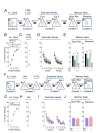





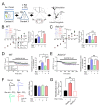

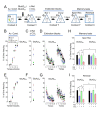

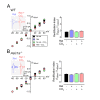
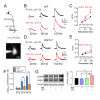
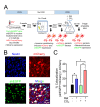

Similar articles
-
Activation of acid-sensing ion channels by carbon dioxide regulates amygdala synaptic protein degradation in memory reconsolidation.Mol Brain. 2021 May 7;14(1):78. doi: 10.1186/s13041-021-00786-7. Mol Brain. 2021. PMID: 33962650 Free PMC article.
-
The dorsal hippocampus mediates synaptic destabilization and memory lability in the amygdala in the absence of contextual novelty.Neurobiol Learn Mem. 2019 Dec;166:107089. doi: 10.1016/j.nlm.2019.107089. Epub 2019 Sep 26. Neurobiol Learn Mem. 2019. PMID: 31563610 Free PMC article.
-
Post-acquisition CO2 Inhalation Enhances Fear Memory and Depends on ASIC1A.Front Behav Neurosci. 2021 Oct 29;15:767426. doi: 10.3389/fnbeh.2021.767426. eCollection 2021. Front Behav Neurosci. 2021. PMID: 34776896 Free PMC article.
-
Synaptic encoding of fear memories in the amygdala.Curr Opin Neurobiol. 2019 Feb;54:54-59. doi: 10.1016/j.conb.2018.08.012. Epub 2018 Sep 11. Curr Opin Neurobiol. 2019. PMID: 30216780 Free PMC article. Review.
-
Erasing fear memories with extinction training.J Neurosci. 2010 Nov 10;30(45):14993-7. doi: 10.1523/JNEUROSCI.4268-10.2010. J Neurosci. 2010. PMID: 21068303 Free PMC article. Review.
Cited by
-
Acid-Sensing Ion Channel 1a Contributes to the Prefrontal Cortex Ischemia-Enhanced Neuronal Activities in the Amygdala.Brain Sci. 2023 Dec 7;13(12):1684. doi: 10.3390/brainsci13121684. Brain Sci. 2023. PMID: 38137132 Free PMC article.
-
Postretrieval Relearning Strengthens Hippocampal Memories via Destabilization and Reconsolidation.J Neurosci. 2019 Feb 6;39(6):1109-1118. doi: 10.1523/JNEUROSCI.2618-18.2018. Epub 2018 Dec 26. J Neurosci. 2019. PMID: 30587543 Free PMC article.
-
A flexible GAS belt responds to pore mutations changing the ion selectivity of proton-gated channels.J Gen Physiol. 2022 Jan 3;154(1):e202112978. doi: 10.1085/jgp.202112978. Epub 2021 Nov 12. J Gen Physiol. 2022. PMID: 34766968 Free PMC article.
-
Mice lacking acid-sensing ion channel 2 in the medial prefrontal cortex exhibit social dominance.Sci Adv. 2024 Oct 25;10(43):eadn7573. doi: 10.1126/sciadv.adn7573. Epub 2024 Oct 25. Sci Adv. 2024. PMID: 39453995 Free PMC article.
-
«One Small Step for Mouse»: High CO2 Inhalation as a New Therapeutic Strategy for Parkinson's Disease.Biomedicines. 2022 Nov 6;10(11):2832. doi: 10.3390/biomedicines10112832. Biomedicines. 2022. PMID: 36359351 Free PMC article.
References
Publication types
MeSH terms
Substances
Grants and funding
LinkOut - more resources
Full Text Sources
Other Literature Sources
Medical
Molecular Biology Databases
Miscellaneous

